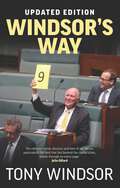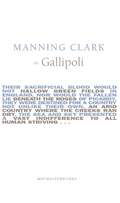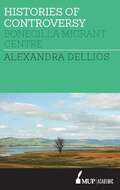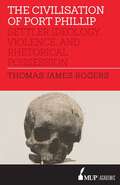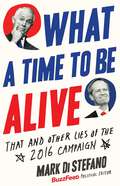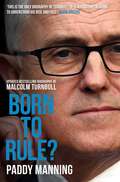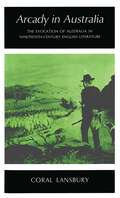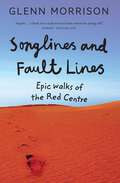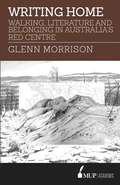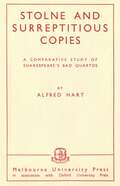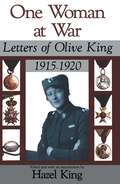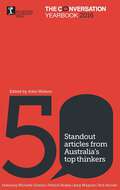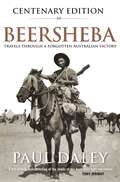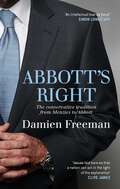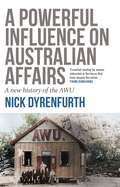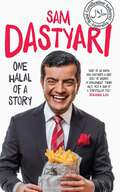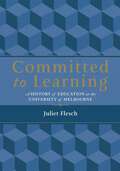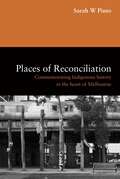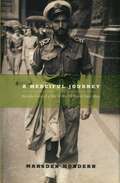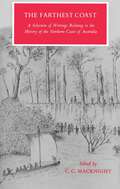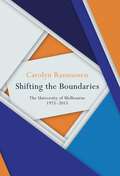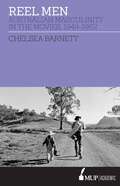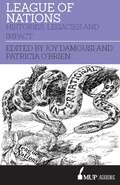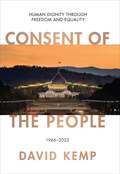- Table View
- List View
Windsor's Way Updated Edition
by Tony WindsorTraitor or saviour? Tony Windsor has been called both in his 22-year political career, but never more often than when he supported Julia Gillard's government in 2010. And now he's back.After three years in retirement, Tony Windsor refuses to stand by and watch regional Australia relegated to being taken for granted. In the forthcoming election he will go head to head with the leader of the National Party, Barnaby Joyce in the seat of New England.Windsor's Way reveals Tony's courageous political path—as a young branch member he moved a no-confidence motion against the National Party leader. He conducted a rigorous 17-day assessment period of Tony Abbott and Julia Gillard's promises following the indecisive 2010 election and then seized the opportunities of the subsequent hung parliament.By staying true to his values and beliefs in difficult and challenging times, Tony Windsor has become an emblem of integrity and decency in Australian politics.
Manning Clark On Gallipoli
by Manning ClarkManning Clark's History of Australia has been nominated as the most influential work of non-fiction Australia has produced. As Donald Horne wrote, Clark 'looked for great human issues and presented them as moral dramas'. In this extract from Volume 5, the tragedy of Gallipoli is played out against the broader Australian experience of World War I, as the nation, still in its infancy, struggled to make sense of the terrible conflict in Europe and its costs. Manning Clark On Gallipoli is the first title in the MUP Masterworks series, which celebrates distinguished Australian writers and ideas. This title's release coincides with the ninetieth anniversary commemorations of the landing at Gallipoli.
Histories of Controversy: Bonegilla Migrant Centre
by Alexandra DelliosBonegilla was a point of reception and temporary accommodation for approximately 320,000 post-war refugees and assisted migrants to Australia from 1947 to 1971. Its function was integral to the post-war immigration scheme, something officially lauded as an economic and cultural success. However, there were considerable hardships endured at Bonegilla, particularly during times of economic and political insecurity. Enforced family separation, poor standards of care, child malnutrition, and organised migrant protest need to be recognised as part of the Bonegilla story. Histories of Controversy: The Bonegilla Migrant Centre gives this alternative picture, revealing the centre's history to be one of containment, control, deprivation and political discontent. It tells a more complex tale than a harmonious making of modern Australia to include stories of migrant resistance and their demands on a society and its systems.
Civilisation of Port Phillip: Settler ideology, violence, and rhetorical possession
by Thomas James RogersPort Phillip's free settlers often said that they were civilising a wilderness. The truth was that the occupied country already had people, laws, politics, and economies. What did 'civilisation' mean to the free settlers? And what was the relationship between civilising and violence? The Civilisation of Port Phillip tracks the violent history of the first years of British settlement in the Port Phillip District, now the state of Victoria. It illuminates the underlying free-settler rhetoric that advocated and abetted violence on the frontier. For the first time, we hear the settlers tell us in their own words what the civilisation of Port Phillip really involved. Frontier violence in Port Phillip involved Aboriginal peoples, convicts, free settlers and colonial officials. This history shows how the lives of these different people interconnected in early Port Phillip, in unlikely friendships, dire misunderstandings, and fatal clashes. It paints a vivid picture of the period drawn from archival records, a thorough re-reading of older histories, and new ideas in the scholarship of violence. As well as sheep and firearms, free settlers brought Enlightenment ideas about civilisation to Port Phillip. When these European ideas were coupled with Australian frontier experience, they manifested in an exterminatory attitude towards people deemed undesirable in the coming colony. The Civilisation of Port Phillip shows how free-settler rhetoric, law, and systems of classification reinforced and sought to justify the violence of the frontier.
What a Time to Be Alive: That and Other Lies of the 2016 Campaign
by Mark Di StefanoWhat a time to be alive: That and other lies in the 2016 campaign is the ugly and un-sanitised diary behind the curtain of the double dissolution election campaign. A poll fought between two wildly ambitious men who want to win their first election, whatever it takes. Mark Di Stefano finds out what is happening behind the scenes and how the two campaigns manufacture, massage and manipulate their parties, policies and principles. What a time to be alive documents the daily ride of an historic election campaign, week by long week, taking you into the bizarre world of staged photo ops, booze-drenched regrets and dirty direct messages. The exposure of the unscripted moments with political leaders, their over-worked staff and secretive minders, shows how the sausage that is this Australian election, is made and reveals what is really inside.
Turnbull Gamble
by Wayne Errington Peter van OnselenThe Liberal Party took a risk replacing Tony Abbott with Malcolm Turnbull. They had seen how voters could turn when the ALP tore down a first-term prime minister. But MPs were desperate, having witnessed the collapse in polling during Abbott's prime ministership. By the time Turnbull called the election it was still unclear what he wanted to achieve. He seemed strangely underprepared for a job that he had fought so long to win. Turnbull leads a party whose culture he doesn't share. While the narrow election victory may have justified the gamble to place him in office, does Turnbull have the leadership qualities needed to break the cycle of division and instability of the last decade?
Born to Rule?
by Paddy ManningAfter wresting the prime ministership from long-term adversary Tony Abbott, Malcolm Turnbull's term at the Lodge was brutally short. It traversed a soaring electoral honeymoon to the marathon 2016 election, to the compromises of a government with the slimmest of majorities and finally death by political sword. Why? Was it collateral damage for a Liberal Party tearing itself apart, or a consequence of the man himself? Born to Rule?, by esteemed journalist Paddy Manning, is the updated bestselling biography of one of Australia's most celebrated overachievers, charting his very public highs and lows in technicolour detail. Based on countless interviews and painstaking research, Born to Rule? charts Turnbull's relentless progression from exclusive Point Piper to Oxford University; from beating the Thatcher government in the Spycatcher trial to losing the referendum on the republic; from defending the late Kerry Packer in a Royal Commission to defending his own role in Australia's biggest corporate collapse. It gives forensic accounts of him striking it rich as co-founder of OzEmail, his spectacular misstep with the Utegate affair, and the hotly contested battle for Wentworth on his grand march towards become prime minister. Turnbull may be out of parliament, but will he ever be out of politics?
Arcady in Australia: The evocation of Australia in nineteenth-century English Literature
by Coral LansburyThis provocative book examines the vision of Australia in nineteenth-century English literature. The industrial revolution destroyed the myth of an idyllic rural way of life in England, and writers like Charles Dickens, Bulwer Lytton and Charles Reade created it anew in the improbable environment of Australia. The popular image of Australia in English literature was Arcadian; in turn it dominated the thought and traditions of writing in Australia. The man who supplied the material for English writers was Samuel Sidney; he was for a time regarded as an expert on Australia, although he had never set foot in the antipodes and all his material was second-hand. His influence on the literature of the period, and consequently on Australia, has received scant attention. Sidney's influence is fully examined; the book also offers entirely new material on Wakefield, Dickens, Lytton and Reade. It provides a new and challenging interpretation of literature and social history in both England and Australia.
Songlines and Fault Lines: Epic Walks of the Red Centre
by Glenn MorrisonVisitors to the Red Centre come looking for the real Australia, but find a place both beautiful and disturbing. There is wilderness, desire and artworks depicting an Aboriginal philosophy of home. But there is also the confusing countenance of the Australian frontier, a meeting place between black and white, ancient and modern. Songlines and Fault Lines explores the Red Centre on foot, through six remarkable stories that have shaped our nation. It follows Aboriginal Dreamtime ancestors along a songline and trudges with John McDouall Stuart as he crosses the continent, and walks the Finke River in the footsteps of anthropologist TGH Strehlow. It keeps pace with conservationist Arthur Groom as he reimagines the country's heart as tourist playground, ponders a philosophy of walking with British travel writer Bruce Chatwin, and then strolls the grog-troubled streets of Alice Springs with Eleanor Hogan.Retracing time-worn pathways and stories of Australia's centre, Glenn Morrison finds fresh answers to age-old queries.
Writing Home: Walking, Literature and Belonging in Australia's Red Centre
by Glenn MorrisonWriting Home explores the literary representation of Australian places by those who have walked them. In particular, it examines how Aboriginal and settler narratives of walking have shaped portrayals of Australia's Red Centre and consequently ideas of nation and belonging.Central Australia has long been characterised as a frontier, the supposed divide between black and white, ancient and modern. But persistently representing it in this way is preventing Australians from re-imagining this internationally significant region as home. Writing Home argues that the frontier no longer adequately describes Central Australia, and that the Aboriginal songlines make a significant but under-acknowledged contribution to Australian discourses of hybridity, belonging and home. Drawing on anthropology, cultural theory, journalism, politics and philosophy, the book traces shifting perceptions of Australian place and space since precolonial times, through six recounted walking journeys of the Red Centre.
Stolne and Surreptitious Copies: A Comparative Study of Shakespeare's Bad Quartos
by Alfred HartThis volume was the first book devoted entirely to an investigation of the many problems associated with the relation between the 'stolne and surreptitious copies' of which Heminge and Condell complain in their address 'To the great Variety of Readers,' and the corresponding plays of Shakespeare printed by them in the first folio. For nearly two and a half centuries prior to the publication of the important Cambridge Shakespeare of 1863-6, many editors and commentators held firmly to the opinion that these words condemned all the quarto editions published in the life-time of the poet. They preferred to rely on the folio version for the text of a play although careful collation had previously proved that the folio text of this play had been set up from one of the earlier quarto editions.
One Woman At War: Letters of Olive King 1915–1920
by Hazel King (Ed)Olive King was born in Sydney in 1885. She offered her services as an ambulance driver soon after war broke out in 1914. She joined a small private organization early in 1915 and went to Belgium. In May 1915 she joined the Scottish Women's Hospitals and her letters, until now unpublished, date from that time. She joined the Serbian Army in 1916 and subsequently rose to the rank of sergeant. Driving on hazardous roads to the Front and to the Adriatic coast, she was often in danger. She was awarded a Serbian silver medal for bravery, and later a gold medal. Her letters not only give a picture of daily life under wartime conditions and in the immediate post-war years. They also show how a woman of the time regarded herself and her place in society.
Conversation Yearbook 2016
by John WatsonIn a year in which political discourse seemed increasingly untethered from reality, The Conversation continued to bring you analysis, commentary and research from academic experts. This clearly written collection ranges widely, from Michelle Grattan's scrupulous assessment of Malcolm Turnbull's first year as prime minister, to Amy Reichelt and Clare Collins' verdict on whether eating chocolate improves your brain function, to philosopher Patrick Stokes' thoughts on the most effective way to respond to Pauline Hanson. It demonstrates the pressing relevance of academic expertise, as well as the deep pleasure of reading people who really know what they're talking about.
Beersheba Centenary Edition: Travels through a forgotten Australian victory
by Paul DaleyA hundred years ago in October 1917 members of the 4th Australian Light Horse Brigade participated in what is now regarded as the last great successful cavalry charge. Waving bayonets overhead in the dying light, they raced across six kilometres of exposed ground in Palestine, surprising the well-entrenched Turks. It was the decisive blow in the British capture of the strategic stronghold of Beersheba. The story of this remarkable military victory has largely slipped through the cracks of history, eclipsed in Australian sentiment by stories of dramatic defeat and loss at Gallipoli and on the Western Front. Paul Daley goes in search of the story of Beersheba. What he uncovers is a story of ordinary men capable of extraordinary acts, as he sheds new light on a dark episode starkly at odds with the Anzac mythology.
Abbott's Right: The conservative tradition from Menzies to Abbott
by Damien FreemanTony Abbott may have been a Rhodes Scholar, but some commentators are convinced that he offered nothing more than three-word slogans. Abbott's Right challenges this perception, and presents Abbott as someone who rejoices in the political battle of ideas. It looks at how the contemporary conservative voice that Abbott champions was fashioned by Sir Robert Menzies, Malcolm Fraser and John Howard, and reflects on what it means to be conservative in modern Australia. It argues that the Liberal Party should return to its conservative roots as a centre-right party and signals how, as such, it might address the public policy challenges in the years ahead. Tony Abbott responds to Freeman's analysis in an afterword, and sets it in the context of the questions that Donald Trump's ascendancy poses for conservatives and Labor alike.
Powerful Influence on Australian Affairs: A New History of the AWU
by Nick DyrenfurthIn this new history of the Australian Workers' Union, prominent author Nick Dyrenfurth traces the fortunes of the nation's oldest continuously operating trade union from its origins in the shearing sheds of the late nineteenth century through to it present-day representation of modern Australia's diverse workforce. The 131-year-old AWU's coverage of rural and regional industries, impact on Australia's national identity, and sway over the ALP have made the union a unique organisation internationally. A Powerful Influence on Australian Affairs tells the story of the AWU's numerous triumphs and crises, colourful characters and famed leaders, political influence, and the changing working lives and aspirations of its rank-and-file membership.
One Halal of a Story
by Sam DastyariAs in life, Sam Dastyari's memoir is unexpected and unorthodox. This is the man who introduced Pauline Hanson to the halal snack pack and accountability to big banks.Named Sahand by his hippy Iranian parents, he changed his name to Sam to fit in with his schoolmates. But Sam was always going to stand out.He joined the Labor Party when he was 16 and was elected as a senator only 13 years later. Sam brings his super-charged approach to life to his writing and the result is hilarious: part-memoir, part-political treatise and part-reflection on hard times.We learn about his cats, Lenin and Trotsky; how to deal with neighbours when their front lawns are under siege from the media thanks to your misdemeanour; and how the most dangerous mosh pits are to be found among parents at the school nativity play.One Halal of a Story is a no-holds-barred look at the good and bad of family, politics, and being Sam.
Committed to Learning: A History of Education at the University of Melbourne
by Juliet FleschConsistently ranking in the top five educational faculties in the world, the Melbourne Graduate School of Education has achieved a status few would have predicted. This history of the first hundred and ten years of the discipline of Education at the University of Melbourne reflects the extraordinary change in the esteem in which it has been held, in the university, Australia and the world. The very idea of Education as a suitable course of study at a university was initially opposed, and until recently the standing of this faculty compared to other professional faculties such as Law or Medicine has been less than equal. But since the University was revitalised and reorganised under the Melbourne Model in 2008, its reputation has risen steadily. Committed to Learning brings to life those whose vision and hard work since its early beginning have brought such success to this faculty.
Places of Reconciliation: Commemorating Indigenous History in the Heart of Melbourne
by Sarah W PintoCentral Melbourne is filled with markers of the city's pasts. At its heart are the stories of exploration and settlement, of the so-called first to arrive, and of the building of a colony and nation. But when it comes to its Indigenous pasts, the centre of Melbourne has long been a place of silence. Over the last two decades, Indigenous histories and peoples have been brought into central Melbourne's commemorative landscapes. Memorials, commemorative markers, namings and public artworks have all been used to remember the city's Indigenous pasts. Places of Reconciliation shows how they came to be part of the city, and the ways in which they have challenged the erasures of its Indigenous histories. Sarah Pinto considers the kind of places that have been made and unmade by these commemorations, and concludes that the twenty-first century settler city does not give up its commemorative landscapes easily.
Merciful Journey
by Marsden HordernIn 1939 Marsden Hordern's mother refused to sign the paper allowing her seventeen-year-old son to fight overseas with the Royal Australian Air Force. 'I did not rear you to be killed in an aeroplane,' she said. 'Join the navy.' He took her advice and in doing so determined his future. In small patrol boats, Fairmiles and a Harbour Defence Motor Launch, he patrolled the shores of Japanese-held territory, assisted beleaguered commandos in Timor, and was finally caught up in the drama of collecting Japanese prisoners of war from the islands. A Merciful Journey presents a vivid and compelling account of Hordern's life from a happy childhood growing up in Sydney during the Great Depression, to his years serving in the Royal Australian Navy from 1942 to 1947. Drawing on the letters and journals he wrote at the time, Hordern engagingly recounts his triumphs and disasters as a naval officer, detailing his rise from a young and callow sub-lieutenant to a lieutenant in command of his own ship. He recalls his hopes and fears, and, in the face of the horrors of war, reveals an appealing enthusiasm for new experiences and a growing love of the sea. A Merciful Journey is a delightful memoir of a young man's coming of age in wartime.
Farthest Coast: A Selection of Writings Relating to the History of the Northern Coast of Australia
by Campbell MacknightNorthern Australia was once one the most remote areas of the world. To all its early visitors—Macassan fishermen, white explorers, soldiers, government officials, settlers and missionaries—it was their farthest coast. For all it was an alien and difficult place to reach.Campbell Macknight outlines the history of the exploration and settlement of the coast from the Gulf of Carpentaria west to the Kimberleys in his introduction. He suggest it is a geographical unit very different from the rest of Australia.His selections from the writings of early visitors are exciting and interesting for their own sakes, and an invaluable guide to a region of growing economic and strategic importance.
Shifting the Boundaries: The University of Melbourne 1975-2015
by Carolyn RasmussenThe University of Melbourne was already over 110 years old when this history begins. The second oldest university in Australia, it has been graced with a number of histories written by eminent historians. Each of these histories has documented the University's evolution and diversification from the perspective of their time. Shifting the Boundaries: The University of Melbourne 1975-2015 continues that story, but the period covered is entirely within living memory. It pauses at ten-year intervals, the first at 1975, to look back at the previous decade. We are invited to enter the University of Melbourne as a living institution, and to watch it as it responds to changing expectations of students, staff and community, to shifting policy frameworks and to an evolving economic and social context. The principal themes that arc across this story involve massive growth, the evolution towards a research-intensive institution, changing pedagogical imperatives, bureaucratisation and internationalisation in the face of declining public funding.
Reel Men: Australian Masculinity in the Movies 1949-1962
by Chelsea BarnettSet against the shifting social and political backdrop of a nation throwing off the shackles of one war yet faced with the instability of the new world order, Reel Men probes the concept of 1950s masculinity itself, asking what it meant to be an Australian man at this time. Offering a compelling exploration of the Australian fifties, the book challenges the common belief that the fifties was a 'dead' era for Australian filmmaking. Reel Men engages with fourteen Australian feature films made and released between 1949 and 1962, and examines the multiple masculinities in circulation at this time. Dealing with beloved Australian films like Jedda (1955), Smiley (1956), and The Shiralee (1957), and national icons of the silver screen including Chips Rafferty, Charles 'Bud' Tingwell, and Peter Finch, Reel Men delves into our cultural past to dismantle powerful assumptions about film, the fifties, and masculinity in Australia.
League of Nations: Histories, legacies and impact
by Patricia O'Brien Professor Joy DamousiLeague of Nations offers new perspectives on the history, legacies and impact of the League of Nations. The essays in this collection demonstrate how vastly diverse topics from film, education, Christian youth movements, colonial rule in the Pacific islands, national economic analyses, disarmament, humanitarianism and refugees as well as international relations, national sovereignty and domestic League of Nations associations—all led to Geneva. As well as the shared connection with Geneva and the League, the chapters are temporally aligned within the twenty-five-year lifespan of the League, from 1920 to 1946. Together the book revitalises the history of the League, and deepens understandings of how its 'many organs' operated and impacted on far-flung parts of the globe, simultaneously crossing borders and scholarly boundaries.
Consent of the People: Human Dignity through Freedom and Equality
by David KempConsent of the People: Human Dignity through Freedom and Equality 1966-2022 explores how Australia's founding Enlightenment ideals were shaped into a unique national liberalism, embodied in liberal democratic institutions, political parties and shared values. Despite intense partisan loyalties, conservative and radical resistance, and a politics of unequal power and influence, inequality was addressed and personal freedom strengthened. This final book in the landmark, five-volume Australian Liberalism series examines the place of liberal ideas in governments from Harold Holt to Scott Morrison. It shows how reform urgency led to the nation's greatest political crisis in 1975, how prime ministers Fraser and Hawke struggled to manage an economy dominated by powerful union, business and global interests, how during twenty-four crucial years Hawke, Keating and Howard led one of the nation's greatest reform eras, and how social reform continued despite the leadership instability of the post-Howard era. David Kemp assesses political parties as the instruments of reform, and the difficulties of achieving reform in the public interest, highlighting the dangers of factionalism and loss of purpose. He examines how an international revival of liberal thought and rising levels of education revolutionised Australian society and politics, creating a moral-and moralistic-ruling class. In a remarkable half-century Australians strove, with growing success, to achieve their dreams.
